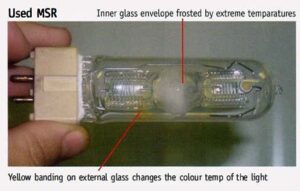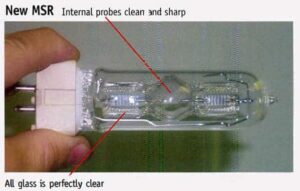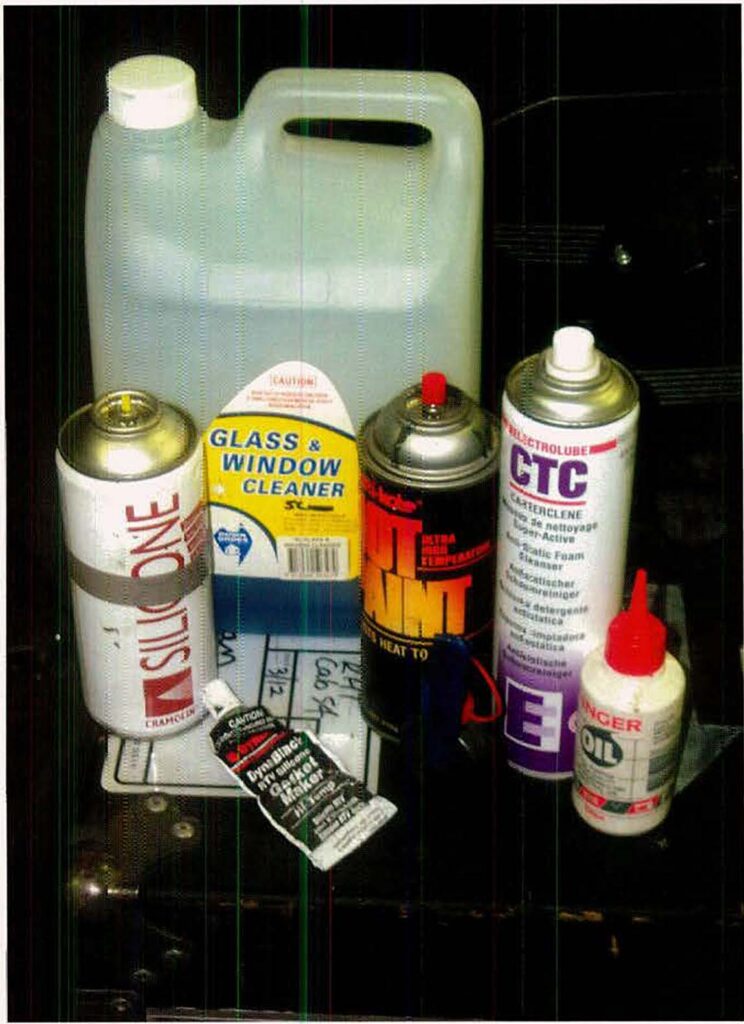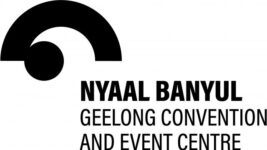News
14 Mar 2018
Moving Light Service

Subscribe to CX E-News
 History – An article from Connections Magazine, March 2003 about
History – An article from Connections Magazine, March 2003 about
Moving Light Service
What’s involved? John Grimshaw visits a very large facility to see first-hand the efforts that go in to protecting a multi-million dollar inventory.
It has long been known that ownership of any moving light equipment means a proactive service program must be implemented. With better prices, higher quality and quieter operation than ever before, many venues are considering the idea of investing in this type of light.
The big unknown for people like this is just what is involved in ongoing servicing. I went to Chameleon Touring Systems to talk to Luke Radin (main picture, Manager, Moving Light Dept) to see how they are able to keep one of the largest stocks of moving lights up, running and reliable.
Located in a warehouse adjacent to the main Chameleon one Luke Radin works with a team of technicians to keep the massive inventory of moving lights running well. His job involves supervising the prep of all moving lights for productions and rental as well as providing technical support for all shows involving moving lights. Luke also tours as the No.1 moving light technician on major shows.

Luke Radin
The day we visited Luke, he and his crew were in the middle of testing and preparing a bunch of older Stage Scans for a hire. Hung underneath a specially rigged and wired sections of tri-truss, each unit was opened up, fired up, tested, checked, repaired and checked for reasonable colour matching of the light output.
While at first glance this appears to be a quite complicated routine, Luke explained what happens with each light, regardless of type, is that a relatively simple (mental) check list is followed lo make sure each light is ready to go. The most common issues that normally require visual inspection are:
• Dust or residue on the optics, air filters, electronics or moving parts
• Loose or missing screws, circlips, gobos, colour filters, wheels etc
• Loose or missing drive belts
• Deteriorated light output/colour.
When testing the operation of the unit and all of its effects, the service technician is looking for:
• Motors not working or just sluggish
• Loose or mis-aligned mechanisms
According to Luke, all of these items can be serviced by the technician if they have the right tools and experience.
Dust and Glunk
The first and most important thing to look for and remove is dust. It collects on moist, greasy or static-charged surfaces, as well as on parts that are in the path of a regular air flow (ie where a fan is blowing).
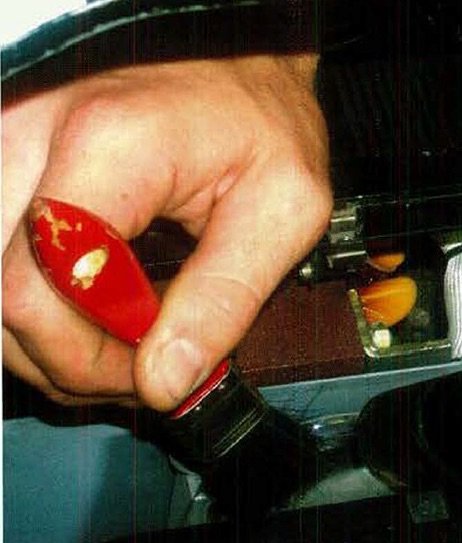 Some people advocate the use of compressed air to “blast” the dust out. However, this is not a good idea for two very important reasons. Firstly, all you are doing is “moving” and not “removing” the problem. Secondly, compressed air is quite moist and often carries droplets of water. Water helps to corrode metal, damages electronic parts, deteriorates electrical contacts and can leave ugly residues if there is something else dissolved into it.
Some people advocate the use of compressed air to “blast” the dust out. However, this is not a good idea for two very important reasons. Firstly, all you are doing is “moving” and not “removing” the problem. Secondly, compressed air is quite moist and often carries droplets of water. Water helps to corrode metal, damages electronic parts, deteriorates electrical contacts and can leave ugly residues if there is something else dissolved into it.
The best method for removing general dust is by using a brush (like a paint brush) and a vacuum cleaner as shown in the picture.
On glass surfaces, any window cleaning product (that doesn’t leave a residue) and a soft cloth (that won’t scratch the lens) works quite well. You should especially check areas where fans extract or blow air. Be aware that dust could also be collecting in the ballast (the base of the moving light).
If the dust has had the opportunity to mix with smoke/haze residue, the resulting mess may be a little difficult lo clean off objects in the optical path because it has been baked on. Don’t be tempted lo use anything stronger then your window cleaner, because many of these items will have an ultra-thin layer of a metal oxide (in other words, a dichroic filter – see the Juliusmedia.com article on Gel), which can be removed with enough rubbing.
Loose or missing screws, circlips, gobos, colour filters and wheels
When you are performing your service, look for missing screws, and become familiar with the ones that loosen with general use of the fixture. Using a product called “Loctite” could be a solution, but be careful – Loctite comes in an array of formulas that can result in a screw NEVER coming out.
A quick look at some of the options available from the Loctite website (www.loctite.com.au):
Threadlocker 222 – Controlled strength for small fasteners
Threadlocker 243 – Medium strength – oil tolerant
Threadlocker 262 – Permanent Strength (up to 20mm)
Threadlocker 270 – Maximum Strength
Threadlocker 271 – High Strength (up to 25mm)
Threadlocker 272 – High Strength – High Temperature ( 200° C)
Threadlocker 277 – High Strength for Large Bolts (up to 50mm)
If you use anything at all the Threadlocker 222 might be the only one to consider, but follow the directions on the bottle and BE CAREFUL. Ideally, you should test what the result will be by using the product in a test hole/bolt before you commit it to your equipment.
A good tip is to have spares of your common screws and bolts. If you have a huge range of metric and other thread types in different sizes to deal with, consider getting together a couple of thread kits like on the RS Components website [updated: http://www.rsaustralia.com/au.rs-online.com – (search for “screw kit”)]. The RS Component ones are a bit pricey, but good to use as a template for you to stock your own kit.
 Another thing to realise when working in this equipment is that there are some specialised tools that are very handy to have. In the picture opposite are a couple of the key ones that Luke has in his kit.You’ll notice that they are all very long! A couple of specialist tools are the T-Bar Allen Key (for grub screws on colour/gobo wheels), the T-Bar Socket Driver and the telescopic magnet (for those dropped screws!). If you take a good look at some of the other pictures here, you will soon see why these long tools are so important.
Another thing to realise when working in this equipment is that there are some specialised tools that are very handy to have. In the picture opposite are a couple of the key ones that Luke has in his kit.You’ll notice that they are all very long! A couple of specialist tools are the T-Bar Allen Key (for grub screws on colour/gobo wheels), the T-Bar Socket Driver and the telescopic magnet (for those dropped screws!). If you take a good look at some of the other pictures here, you will soon see why these long tools are so important.
Loose or missing drive belts
While a unit may continue to run happily for a while with a loose drive bell, it may not be too long before it becomes a “missing” drive belt.
While you are servicing the unit, physically check the tension on the belt. If, through experience, you realise that the belt needs adjustment (and is capable of being adjusted) this would be something to attempt self-repair if your company owns the lights, but not a good thing to do to any hired lights – unless you have permission to do so from the hire company.
The belts themselves are relatively cheap to replace, which may be a better option than re-tensioning the existing belt.
Deteriorated light output/colour
The bubbles used in many moving lights are not like the filament based tungsten halogen bubbles used in conventional lighting – these are “arc” lamps, with the light produced by an electric arc between two metal pins.
These pins wear out with use, and if used to death, will often explode at the very end of their life. An explosion is not the best thing to have happen to the delicate inner workings of a moving light. If it does happen, the explosion will typically damage numerous other components.
This is why these lamps have a defined, limited lamp life. If the manufacturer says it is a two thousand hour lamp, then that is how long you should run it – and no more. As these lights are run through their life-span, the colour temperature of the light output will also evolve.
This is caused by a number of factors – distortion of the glass envelope, minute variance in the distance between the pins for the arc, discolouration of the outer glass envelope, etc.
The picture here shows two identical lamp types, one unused and one at the end of its life. The used one has an identifiable yellow band on the outside of the glass, the inner glass envelope is heavily frosted and the pins inside this envelope are visibly degraded.
A good hire company will try to make sure that lamps with similar colour output are sent to the same hirer.
What causes problems?
According to Luke, “Transport is the evil enemy.” The loading and unloading of equipment by inexperienced people are a direct cause of many of the faults that Luke corrects. Things like putting the work unit in the wrong case can have serious effects on the fixture.
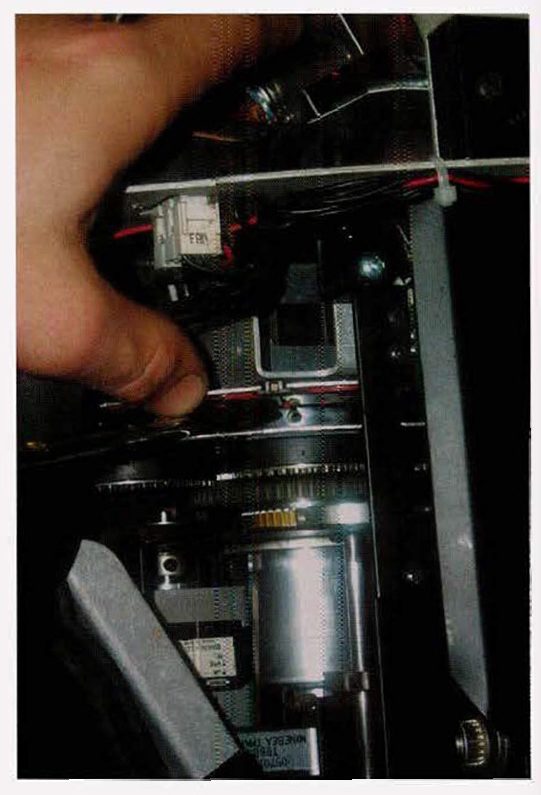 The example Luke gave was that of the Mac5OO and the Mac600 – two very similar fixtures in terms of their shape. However, a Mac500 travelling in a Mac600 case can “bounce” its nose on the floor of the case if the truck hits a bump. This translates as a smashed or scratched lens, damaged lens mountings and physical shock to the onboard electronics of the whole unit.
The example Luke gave was that of the Mac5OO and the Mac600 – two very similar fixtures in terms of their shape. However, a Mac500 travelling in a Mac600 case can “bounce” its nose on the floor of the case if the truck hits a bump. This translates as a smashed or scratched lens, damaged lens mountings and physical shock to the onboard electronics of the whole unit.
Another issue Luke has to deal with is the results from a dropped fixture. Depending on the height of the fall, a dropped unit could have no apparent damage, but it simply doesn’t work as well as it used to. It might be more sluggish or more noisy and quite often this kind of damage is not repairable by Luke and his team, even if they do replace the suspect parts.
While full service for the unit by the distributing company can be considered, the cost of this kind of work can easily exceed the replacement value of the unit itself.
Another issue that comes under Luke’s description of “evil enemy” would have to be dust. Left unchecked, Luke confidently indicated that dust would eventually choke any moving light. However, just because your venue is dusty, it doesn’t mean you cannot use moving lights.
Anyone considering purchasing their own stocks of moving lights would need to consider how dusty the work environment is to work out how often they would need to service their equipment. Perhaps a good guide would be to check the units one month after installation for any sign of dust collecting in the most likely places, then regularly after that depending on the amount of dust you find.
It is for this reason that Chameleon would organise for an “installed service” for a long running, big show. Luke indicated that, depending on the terms of the hire contract, he might go onsite a few times in a three month hire to make sure everything was running to spec.
Interestingly, the “age” of a unit does not have loo much of an effect on the working life of the equipment Luke looks after. Some of Chameleon’s stocks of MacSOOs are close to eight years old and most are on hire 80 to 90% of the time.
Yet, because they are well maintained, they continue to work very well. Individual components inside the fixtures are replaced as they wear out, and they are regularly checked, cleaned and tested before hiring.
For Luke there will always be the ESU problems. “Equipment Superior to User” failures happen when the hirer does not know how to use the equipment, know how to make minor repairs on hired equipment, or know when to not even attempt a repair.
Hopefully, after reading this article, there might be one or two things you could try yourself before calling the hire/sales company. But one question you should ALWAYS know the answer to is: “Who do I call if I have a problem with this light?”
In the photo:
Gasket stuff – ‘Great for re-gluing dichroic, fixing-in some reflectors and gluing gobos in place.
Foam cleanser – Cleaner for anti-static surfaces in consoles (like touch screens, etc)
Silicon spray – Lubrication of focus shafts and other moving parts (except bearings and high temp parts like an iris)
Singer Oil – used on faders (after contact cleaner) to maintain smooth operation
Clay Paky Oil – Bearing lubrication Glass Cleaner – For lenses etc. Important to choose one that does not leave any residue
Hot Paint – Withstands high temps. For external surfaces to restore the appearance of the device
Graphite Dust (not pictured) – good for lubricating hot mechanisms like the iris.
Do you have a comment or tip to add, perhaps in view of current practices and technologies? Email: juliusmedia @ me.com
This article first appeared in the print edition of Connections Magazine March 2003, pp.46-49. CX Magazine is Australia and New Zealand’s only publication dedicated to entertainment technology news and issues. Read all editions for free or search our archive www.cxnetwork.com.au
Subscribe
Published monthly since 1991, our famous AV industry magazine is free for download or pay for print. Subscribers also receive CX News, our free weekly email with the latest industry news and jobs.

